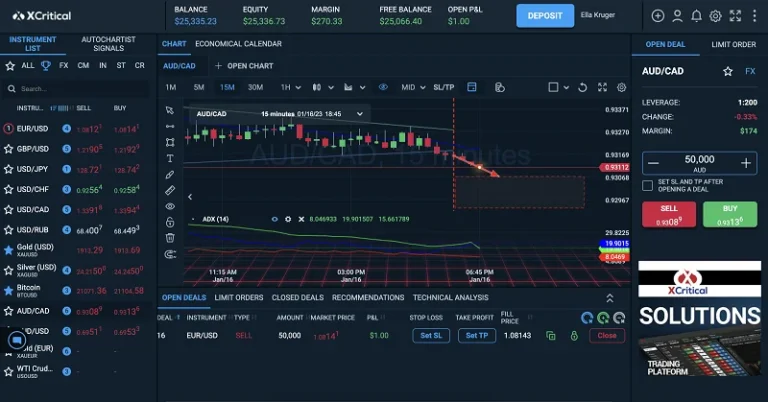Content
Similarly, some political parties and organizations have explored blockchain-based voting systems to increase transparency and voter participation in elections. Public blockchains operate in a decentralized manner, meaning no single entity or authority has https://www.xcritical.com/ control over the network. This decentralization fosters resilience and ensures that no central point of failure exists.
Private Blockchain Uses/Examples
During peak hours, when tons of transactions are happening at once, things can slow down a bit. Every participant in the network needs to verify each transaction, and that can create a bottleneck as the network grows. This can lead to transaction delays and even higher fees during periods of heavy use. Get monthly blockchain tips.On top, you’ll get our free blockchain beginners course right away to learn how this technology will change our lives. Watch webinars on our website to find out more or talk with one of our which is better public or private blockchain experts to find the best blockchain solution for your business. Development Services – innovative solutions from the whitepaper to the finished blockchain.
Public vs. Private Blockchain Differences With Examples (Which IS Best?)
Since they do not occupy so many transactions and participants, private blockchains have a remarkably fast transaction speed, especially in comparison to a public blockchain network. Another significant Fintech advantage of public blockchains is that they are compatible with any type of business application due to their open-source nature. Businesses are already using blockchain to store records of medical transactions, documentation, identity information, supply chain records, etc. Even more phenomenal is that anyone in any part of the world can access the blockchain.
- This allows for faster transactions and lower energy consumption but comes at the cost of reduced transparency and centralization.
- Conversely, private blockchains—also known as permissioned blockchains—are closed networks that require an invitation to participate.
- But, the gatekeepers in control of the blockchain are, at least in part, from the same company trying to get consumers to trust them in the first place.
- This can have negative environmental impacts and results in high costs for users.
- Each of these consensuses for both private and public blockchains has its potential merits and downsides, but they markedly define how the systems run or operate in general.
Difference between Public and Private blockchain

Imagine a town square where everyone can observe and participate in transactions, with each transaction recorded transparently for all to see. All businesses related to supply chain or logistics will use private blockchains mainly for track and trace reasons. Distributed ledger technology is the best way to store data from cross-border transactions. By keeping the records of clients, land data, and other important information.
This broad support streamlines the process of obtaining NFT information, automating the gathering of data from multiple blockchain protocols and organizing it for easy access and analysis. Whether building NFT marketplaces, gaming platforms, or digital collectibles applications, developers can leverage Vezgo’s NFT API to enrich their products with valuable NFT data seamlessly. Here are some reasons why some organizations often opt for public blockchain technology. Transactions in these blockchain networks can be viewed and tracked by anyone with access to the internet. On the other hand, if mining is required, then computational power is needed too. The private blockchain vs. public blockchain exposition will best be understood with the analysis of the examples of both.
Also, if a blockchain’s security measures are increased, decentralization and scalability generally decrease correspondingly because of the way public blockchains must be designed. One of the primary issues with public blockchains is their ability to handle varying amounts of use. Many have limitations based on the number of transactions that can be managed. Too much traffic or use causes the blockchains to become congested, and too little traffic or use causes them to become less secure.

Anyone with an internet connection can see these transactions happening in real time. Public blockchains often involve transaction fees, a small price to pay for maintaining the network and rewarding those who validate transactions. It’s like a library membership fee – you pay a bit to access a vast amount of information and even contribute your knowledge to the network. Public blockchains rely on a community of users and stakeholders to make decisions about the network. This means that decision-making is decentralized, with each participant having a say in the direction of the network. While this can sometimes lead to disagreements and debates, it also ensures that decisions are made with the best interests of the community in mind.
With this permissioned structure, private blockchains give businesses more control over who sees their sensitive data and who can participate in specific transactions on the network. Fewer participants also means private blockchains can validate transactions much faster. A private blockchain is a decentralized ledger that is only accessible to a select group of individuals or organizations. It has a single operator or entity that controls who can access the network, view information, and create data on the blockchain.
Moreover, a private Blockchain is more centralized due to the fact that a single authority maintains the network. IBM, R3 Corda, Hyperledger Fabric, Hyperledger Sawtooth, etc. are the examples of private Blockchains. Another disadvantage is the voracious consumption of electricity that public blockchains consume as users mine for cryptocurrency on the network.
Public blockchains, like the ones powering cryptocurrencies traded on exchanges like Binance, Bybit, or Kraken, prioritize transparency and security. Private blockchains, however, offer greater control and efficiency within a closed network. Maybe for splitting a bill with friends or booking a hotel with your favorite digital currency. Well, blockchain technology is making this a reality – and that’s where the question of public VS private blockchain comes in. Public blockchains often employ resource-intensive consensus mechanisms like Proof of Work (PoW) or Proof of Stake (PoS) to validate transactions. Private blockchains, however, can use more efficient consensus algorithms, as they operate within a trusted network of known participants.
Private blockchains can achieve higher transaction throughput and faster confirmation times compared to public blockchains. With fewer nodes to reach consensus, these networks can scale more efficiently to meet business needs. For instance, a private blockchain deployed within a supply chain ecosystem can process a large volume of transactions, such as inventory tracking and product authentication, without experiencing congestion or delays. This scalability enables enterprises to streamline operations and improve efficiency without sacrificing performance. Public blockchains are great for fostering trust in open environments, providing cryptocurrencies that can be traded on platforms like Binance, Bybit, or Kraken. However, private blockchains are ideal for businesses that require faster transactions, stricter control over data, and increased privacy.
However, the more decentralized a blockchain is, the less scalable and secure it generally becomes because more measures must be taken to ensure it is secure. Public blockchains must properly balance interoperability, scalability, security, decentralization, energy use, and use cases to attract network participants. In many cases, some or most of these factors must be sacrificed for others to be enhanced. Private blockchains are used by entities that need a secure ledger, allowing access to only those who need it. Blockchain, the underlying technology behind cryptocurrencies like Bitcoin, is quickly gaining popularity in the digital space.
Because it’s decentralized, public blockchains are called “permissionless” and also “trustless” with its anonymous users. Ultimately, blockchain technology is becoming more popular and rapidly gaining enterprise support. Every one of these types of blockchain has potential applications that can improve trust and transparency and create a better record of transactions.
While private blockchains offer enhanced privacy, they may be vulnerable to insider threats or collusion among authorized participants. Ensuring robust security measures and access controls is paramount to mitigate these risks. For example, a private blockchain used for voting or elections may be susceptible to manipulation or fraud by insiders with malicious intent. Additionally, the centralized nature of private blockchains may make them a target for cyber attacks or unauthorized access attempts. Implementing strong authentication, encryption, and auditing mechanisms is essential to safeguard the integrity and confidentiality of data on private blockchains. Private blockchains are inherently more centralized than their public counterparts, as access and validation are controlled by a select group of participants.
